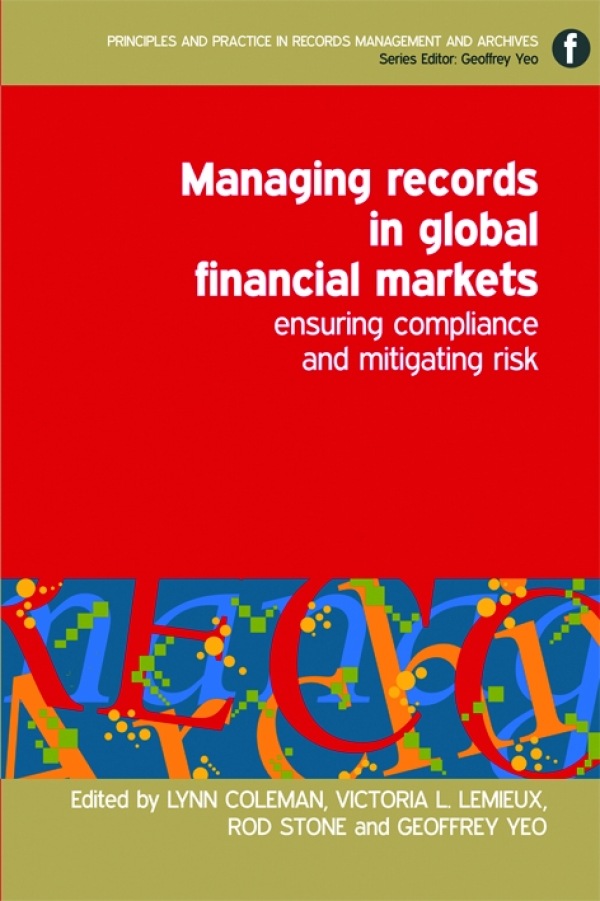Book contents
- Frontmatter
- Contents
- Introduction to the series
- Contributors
- Introduction
- List of abbreviations
- 1 Global financial markets
- Part 1 Regulatory and legal compliance
- Part 2 Balancing risk and return
- 7 Managing records risks in global financial institutions
- 8 The digital revolution and its impact
- 9 Mergers, acquisitions, divestitures and insolvencies
- 10 Records management considerations in global strategic outsourcing
- Part 3 Litigation-related issues
- Part 4 Record-keeping approaches
- Index
8 - The digital revolution and its impact
from Part 2 - Balancing risk and return
Published online by Cambridge University Press: 08 June 2018
- Frontmatter
- Contents
- Introduction to the series
- Contributors
- Introduction
- List of abbreviations
- 1 Global financial markets
- Part 1 Regulatory and legal compliance
- Part 2 Balancing risk and return
- 7 Managing records risks in global financial institutions
- 8 The digital revolution and its impact
- 9 Mergers, acquisitions, divestitures and insolvencies
- 10 Records management considerations in global strategic outsourcing
- Part 3 Litigation-related issues
- Part 4 Record-keeping approaches
- Index
Summary
Introduction
In some respects, the business that a financial institution performs on a daily basis has not changed in hundreds of years. It has always been part of the job of bankers to assess many pieces of information, determine the risks and make judgements about what business it is right to conduct. Today's basic approaches are similar to those that were in place at the time of the Medici dynasty in the 1500s.
One thing that has changed, however, is the technology used in financial institutions to create, store and communicate records and information. Since the commercialization of the internet in 1993, the complexity, velocity and quantity of information created and used by our society has grown at a phenomenal rate. The rivers of data in all areas of global financial markets have caused a revolution inside financial institutions as numerous systems try to perform similar tasks for many departments in slightly different ways.
All parts of a financial institution need to meet the ‘raised bars’ of new regulatory policies that presuppose that all necessary information can be quickly ‘Googled’. Today, an institution needs to know what records and data it has and be able to access them quickly and economically, if it is to rise to the new challenges it faces from the market and operational pressures introduced in recent years whilst remaining competitive.
Financial institutions’ senior managers are required to be more accountable personally by ensuring that they have an adequate plan to ‘know their data’ so that they can prove that the judgements they made at a particular moment were correct. To make this happen, internal functions need to work together to manage the digital infrastructure in which records are generated and stored.
Major developments in information technology
The records of financial institutions have always been used to track information about the world within the control of such institutions (the products and services offered to their clients) and information about the world around them (the state of the clients’ creditworthiness, the market, etc.). Since the deployment of the first spreadsheets in the 1980s, distributed analytical tools have allowed all parts of an institution quickly to form views of the digital world around them and take action.
- Type
- Chapter
- Information
- Managing Records in Global Financial MarketsEnsuring Compliance and Mitigating Risk, pp. 107 - 118Publisher: FacetPrint publication year: 2011



